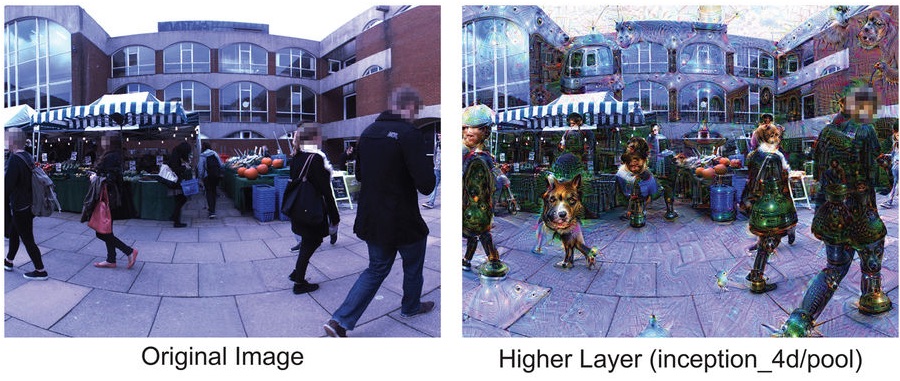'Hallucination Machine' Takes You on a Drug-Free Psychedelic Trip

Virtual-reality devices can transport users to magical realms from the comfort of their own homes, but a new device built by British engineers takes users on a different kind of trip: It lets people experience the trippy visuals brought on by psychedelic drugs in a completely drug-free way.
But this "hallucination machine" isn't just for entertainment; it also opens new avenues into research on visual hallucinations, according to a new study.
The device combines a virtual-reality headset with Google's Deep Dream algorithm, which uses a so-called deep neural network to analyze and enhance images. Deep Dream works by spotting patterns in images and transforming them in a way that mimics a phenomenon called pareidolia, which occurs when people see faces or objects in random clusters of visually perceived patterns. [Trippy Tales: The History of 8 Hallucinogens]
To develop the VR device, the researchers fed the algorithm panoramic videos of natural scenes instead of static images, to re-create the lifelike hallucination experience.
To understand how the algorithm works, consider an instance in which a pattern of dots can appear to be a more complex image. "Sometimes, you can find a face with just three dots on a wall," said lead study author Keisuke Suzuki, a postdoctoral research fellow at the Sackler Centre for Consciousness Science at the University of Sussex in the U.K. "You see [one thing], but your mind changes it into something different."
The Deep Dream algorithm works in a similar way, Suzuki told Live Science. It enhances the patterns that it finds in a way that distorts the original video imagery into an immersive psychedelic film that completely surrounds the person.
In the new study, which was published Nov. 9 in the journal Scientific Reports, the researchers tested the hallucination machine on a group of volunteers and asked them to describe the experience in a questionnaire. The volunteers' responses indicated that what they experienced while wearing the device was quite similar to the effects of psilocybin, a chemical compound responsible for the hallucinogenic effects of "magic mushrooms."
Sign up for the Live Science daily newsletter now
Get the world’s most fascinating discoveries delivered straight to your inbox.
However, the tests showed that the device didn't cause the people to experience a distortion of time, which is a common side effect of taking psychedelic drugs.
The researchers included only healthy individuals in the study, Suzuki noted. "But it would be interesting to compare the experience between the simulated artificial hallucinations and drug-induced hallucinations," he said.
But because psychedelic drugs not only affect visual perception but can cause other changes in the brain and body that are most likely harmful, it's difficult to study such altered states of consciousness.
In addition to helping them learn more about drug-induced hallucinations, the researchers hope that the machine could lead to the development of new techniques for studying the experiences of people who have hallucinations due to psychiatric conditions.
"Normally, it is kind of difficult for [patients with hallucinations] to report what they are actually experiencing in [the] visual hallucinations," Suzuki said. But with the new device, researchers can show patients similar hallucinations that have been generated by a computer. "Because all these artificial hallucinations are generated by a computer model, we can manipulate the parameters to simulate what the person actually experienced," he said.
The technology could also help improve scientists' understanding of the mechanisms behind hallucinations, he added.
Studying these hallucination processes could help further scientists' understanding of how conscious perception works, the researchers wrote in the study. The machine offers an opportunity to study these processes without the chemical effects and changes that happen in the brain of someone who uses drugs or has a psychiatric condition.
Originally published on Live Science.

What are mRNA vaccines, and how do they work?
Deadly motor-neuron disease treated in the womb in world 1st










